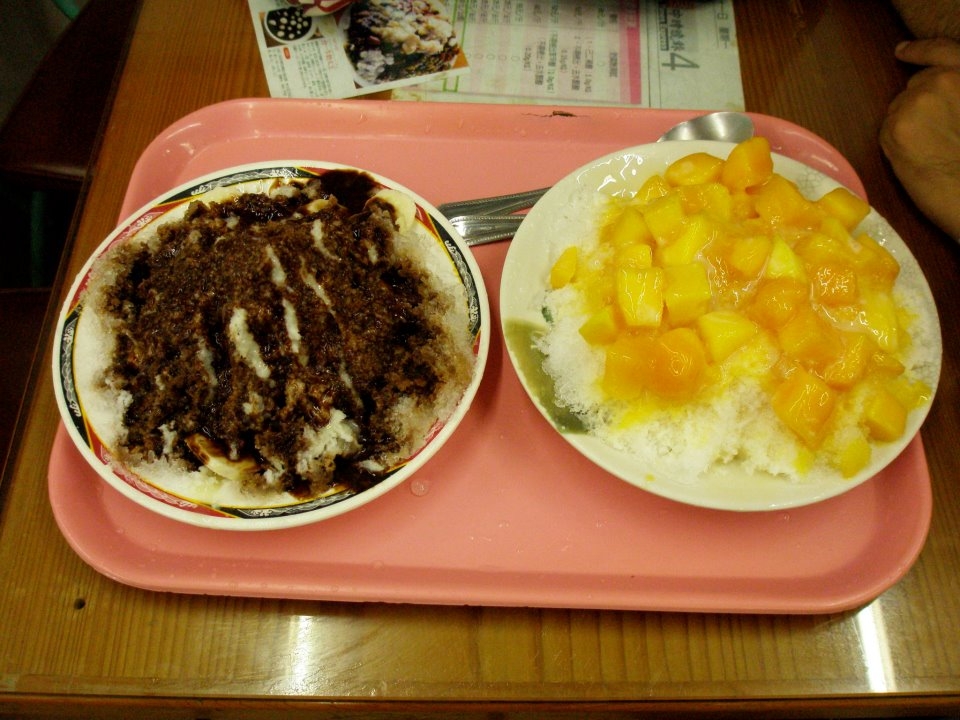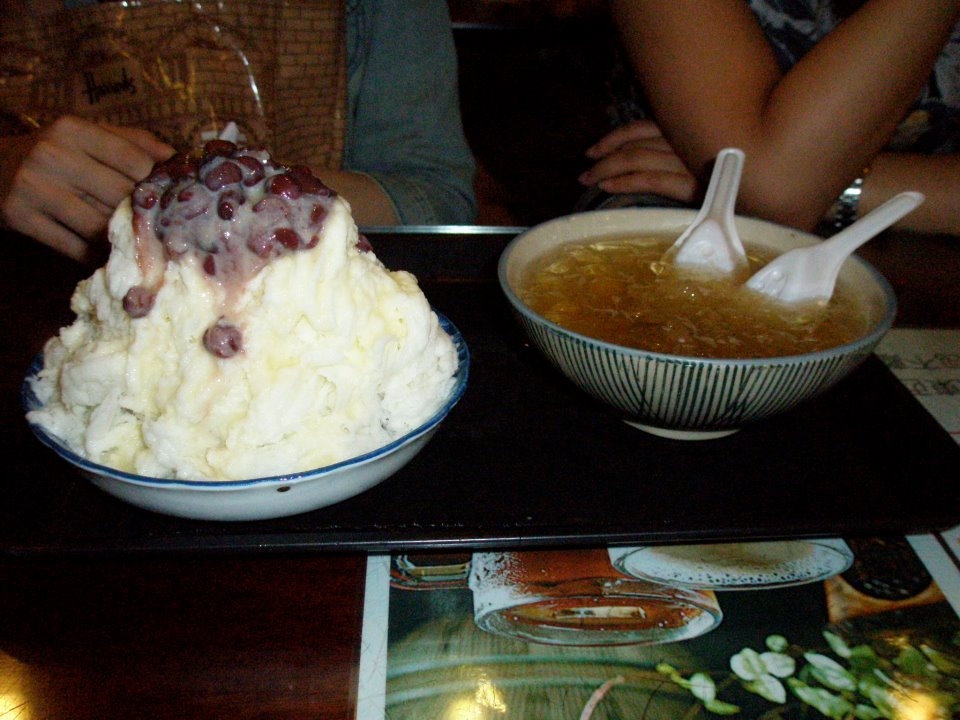Heat waves have already hit many cities across the United States this summer, so what better way to lessen the side effects of heat than by eating something nice and cold? Many of us will simply head over to the local ice cream chain or nearest grocery store, but why not try something different? In countries like China and Taiwan, many opt for a regional delight called bàobīng (刨冰). Bàobīng is a dessert that traditionally consists of shaved iced, sugarcane juice, fruit or red beans.
Some say the dessert was created as far back as the 7th century A.D. In cities like Taipei, the creation of this popular dish has modernized with ice making machines. However, in the countryside you can still find shops that do it all by hand, using a mallet or blade used to shave off large pieces of ice!
Like many dishes, bàobīng is influenced by the region it’s made in, and thus takes on different forms or includes different ingredients. For example, in Taiwan, this dessert often includes various types of jellies. One jelly, mainly found in Taiwan, 愛玉冰 or àiyù bīng is sometimes added to the ice mixture or served on its own. This particular jelly is made from the seeds of fig plants, found mainly in Taiwan and Singapore. Even eaten alone, àiyù bīng is considered a refreshingly cool summertime delight. In addition to àiyù bīng, other regional additions include mangoes, taro and lychee. Variations on bàobīng can also be found in Japan, Malaysia, Korea and the Philippines.
Don’t worry if you’re not quite ready to study abroad and experience bàobīng right in China or Taiwan, because the dish has also made its way to the U.S! You can find this cold dessert in Chinatowns from San Francisco to Boston. Naturally, bàobīng has gone through some transformations of its own in the U.S. Some of these new alterations have made the dish more popular throughout the states and even made their way back to Asia. One noticeable and well-liked change is the use of sweetened condensed milk instead of sugarcane juice. Other American additions include adding each state’s seasonal fruit to the dish. Yet traditional or westernized, nothing beats bàobīng when the temperature rises!
Want to be able to order delicious desserts and other great dishes while visiting Chinese-speaking countries? Check out Success with Chinese, and learn how to order from and read restaurant menus, along with other practical language lessons for trips abroad!





Comments